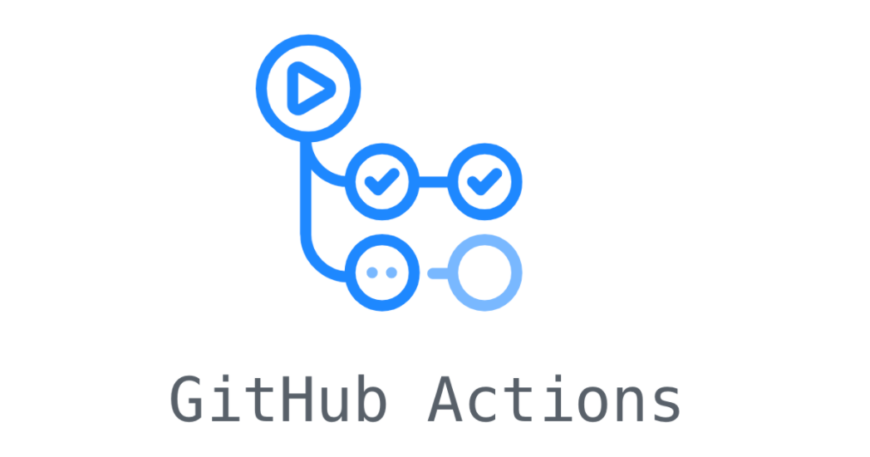In the dynamic landscape of software development, automation has become a cornerstone for enhancing productivity and ensuring quality. GitHub Actions is a robust tool integrated into GitHub that allows developers to automate their software workflows right from their repository. This blog post will walk you through how to write workflows, explore various use cases, implement Continuous Integration/Continuous Deployment (CI/CD), deploy applications, understand syntax, and discuss the use of self-hosted runners.
Basic Terms in GitHub Actions
- Workflow: An automated process made up of one or more jobs. Workflows are defined in YAML files within your repository under
.github/workflows. - Job: A set of steps that execute on the same runner. Multiple jobs can run in parallel or sequentially.
- Step: An individual task within a job. Steps can run commands, set up environments, or run actions.
- Action: Reusable tasks that can be either custom or from the GitHub Marketplace.
- Runner: Machines that execute workflows. GitHub provides hosted runners, but self-hosted options exist too.
- Event: Activities that trigger workflows, like pushes or pull requests.
- Environment Variables: Used to pass information between steps or configure behavior.
- Artifacts: Files produced by a workflow that can be stored for later use.
- Services: Containers that can be run for the duration of a job to provide services like databases or caching systems.
Writing Workflows in GitHub Actions
Here’s how to set up a basic workflow:
Filename: Use .yml or .yaml for your workflow files.
Syntax:
- Name: Assign a name to your workflow for easy identification.
- On: Define what triggers your workflow (events like
push,pull_request, orschedule). - Jobs: Each job can run on different environments or in parallel.
- Steps: Within jobs, steps outline the actions or commands to run.
name: Example Workflow
on: [push]
jobs:
build:
runs-on: ubuntu-latest
steps:
- uses: actions/checkout@v3
- name: Run a one-line script
run: echo Hello, world!
Use Cases with GitHub Actions
- Automated Testing: Run tests automatically on code changes to ensure quality.
- Code Quality Checks: Use linters or static code analysis tools.
- Deployments: Deploy your application to different environments.
- Scheduled Tasks: Perform periodic tasks like backups or data cleaning.
CI/CD with GitHub Actions
Continuous Integration (CI)
Automate building and testing of code changes. Example:
on: [push, pull_request]
jobs:
ci:
runs-on: ubuntu-latest
steps:
- uses: actions/checkout@v3
- name: Set up Go
uses: actions/setup-go@v3
with:
go-version: '1.x' # Specify your Go version here, like '1.17' or '1.x' for latest in 1.x series
- name: Build
run: go build -v ./...
- name: Test
run: go test -v ./...
Continuous Deployment (CD)
After CI passes, automatically deploy to staging or production:
on:
push:
branches:
- main
jobs:
deploy:
runs-on: ubuntu-latest
steps:
- uses: actions/checkout@v3
- name: Deploy to Server
uses: appleboy/ssh-action@master
with:
host: ${{ secrets.HOST }}
username: ${{ secrets.USERNAME }}
password: ${{ secrets.PASSWORD }}
script: deploy.sh
Deploying with GitHub Actions
Deployment can be as simple as pushing a Docker container to a registry or as complex as deploying to Kubernetes. Here’s a simple Docker deployment example:
name: Docker Image CI
on:
push:
branches: [ "main" ]
jobs:
push_to_registry:
runs-on: ubuntu-latest
steps:
- uses: actions/checkout@v3
- name: Build the Docker image
run: docker build . --file Dockerfile --tag myimage:${{ github.sha }}
- name: Push to Docker Hub
uses: docker/login-action@v1
with:
username: ${{ secrets.DOCKER_USERNAME }}
password: ${{ secrets.DOCKER_PASSWORD }}
- run: docker push myimage:${{ github.sha }}
Syntax and Advanced Features
- Expressions: Use
${{ }}to access contexts or evaluate conditions. - Jobs & Steps: Control flow with
ifconditions,needsfor job dependencies. - Matrix Strategy: Run a job multiple times with different configurations.
Self-Hosted Runners
Self-hosted runners are machines that you manage and maintain to run GitHub Actions workflows, offering more control over the environment, hardware, and software configurations compared to GitHub’s hosted runners.
The primary difference between self-hosted runners and GitHub’s hosted runners lies in their management and capabilities: while hosted runners provide a pre-configured, managed environment with ease of use and broad compatibility, self-hosted runners allow you to tailor the system to your specific needs, handle large data sets, or comply with security policies by keeping data within your own network. However, they require you to manage their maintenance, updates, and scaling.
Why Use Them:
- Custom Environments: If you need specific hardware or software not available in GitHub’s hosted runners.
- Control: Manage your infrastructure, potentially increasing security or meeting compliance needs.
- Cost: For high usage, self-hosting can be more cost-effective.
When to Use:
- For running long jobs or jobs requiring large datasets.
- When you have unique software or hardware requirements.
- If you have performance-critical tasks or need to ensure data doesn’t leave your network.
When Not to Use:
- If you’re looking for simplicity; GitHub’s hosted runners are easy to set up.
- For small projects or teams where the overhead of managing runners isn’t justified.
- If you don’t need specialized environments.
Conclusion
GitHub Actions provides a powerful platform for automating your development lifecycle, from CI/CD to complex deployment strategies. By understanding how to write workflows, leveraging available use cases, and knowing when to use self-hosted runners, you can dramatically improve your team’s productivity and software quality. Remember, the flexibility of GitHub Actions means it can grow with your project, adapting to more complex needs as they arise.
At OpsBridge, our experts excel in harnessing the power of GitHub Actions to streamline your development process. We can significantly reduce time and costs while accelerating testing and deployment to production. Get in touch with us today to optimize your workflow.


